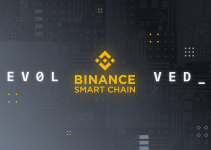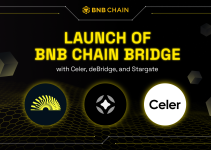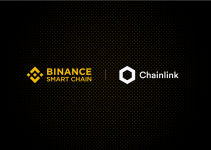
In the Project Spotlight series, we interview projects developing on the Binance Smart Chain (BSC). Previously, we shared interviews with many projects, including BunnyPark, Featured by Binance, Kalata Protocol, X World Games, and Argon. In the next paragraphs, we’ll introduce you to an innovative DeFi project Tranchess.
Spotlight on Tranchess
IMPORTANT: Please note the following content does not constitute an endorsement or approval of any of the products or services of the project, organization, or individual.

What is your core business? Can you expand on your business strategy to those unfamiliar with your project?
Tranchess is the first of its kind Tokenized Asset Management Protocol. Tranchess derives a different risk/return matrix out of a single main fund. As you might have noticed – the name Tranchess is inspired by the game of chess and the French word “Tranche”, which is often associated with tranche funds that cater to different classes of investors with various risks appetites.
The main fund, aka token Queen, tracks a specific underlying asset and can be split equally into two sub-funds. We have purposefully chosen BTC as the first crypto asset to track. Meanwhile, it also shares many popular DeFi features such as single-asset yield farming, borrowing & lending, trading, etc.
To explain Tranchess tokens further – token Queen currently tracks BTC and can be split into 0.5 token Bishop and 0.5 token Rook. Token Bishop purely earns more yield and has no exposure to BTC price movement at all, while Token Rook earns a smaller yield but is essentially a 2x leverage token for BTC.
Our vision: “Empowering DeFi users with Omni Asset Management capabilities while contributing to the paradigm shift from Traditional Finance to DeFi.”
Our mission: ”To offer a full product suite in Asset Management service, tailored for DeFi users across risk capacities and appetites, while providing multichain access with different underlying assets.”
When was the idea behind Tranchess born, and what led to it?
Tranchess was first conceptualized in the mid-2020s. The DeFi market then was already blooming with a vast selection of lending, yielding, and DEX protocols. However, we found a few pain points that were left unattended:
- Risk-averse investors who focus on yield are prone to suffer from impermanent loss by liquidity provision on AMM DEX. The low and unstable return from lending protocols is neither helping the situation.
- Risk-seeking investors who focus on leverage suffer from high costs associated with leverage, plus force liquidation whenever the market becomes volatile.
- Another large group of BTC holders, looking for a return on their coin, struggle with limited BTC farming products with reasonable yield.
After rounds of brainstorm, we eventually decided to carve a path to our dream, which led to the creation of Tranchess—an attempt to solve all the pain points above.
Can you tell us more about your team’s background and introduce the core members?
Tranchess team hails from diverse experiences and backgrounds – From roles in Tech giants such as Microsoft, Facebook, Google to investment banks such as Morgan Stanley, UBS, BNP Paribas, etc. Our tech team is particularly experienced with cybersecurity in trading and DeFi protocols. Their knowledge in smart contract coding is additive to the maintenance and upgrades in years to come. In terms of geographic location, team members are decentralized across North America, Europe, Asia. We believe that the synergy from this diverse team allows us to present a new class of DeFi – The Tranchess Protocol.
What are the main advantages of Tranchess for the user, compared to a similar project from a mainstream financial market or DeFi?
It is difficult to compare given that it is one of its kind in the DeFi world. The protocol leverages smart contracts to realize transparency and automation for all processes. Tranchess itself is a product of the DeFi space and would naturally encompass many of DeFi characteristics. In essence, taking BTC as an example, Tranchess users can have enhanced yield while tracking BTC, earn extra interests by lending out their tokens, or enjoying leverage with no forced liquidation. Tranchess has its own value creation, and not to mention, users share platform earnings as part of their staking returns!! The flexibility to put on different trades within the Tranchess ecosystem and opportunities to gain from both NAV and yield perspectives make it difficult to find an equal project in the mainstream financial market.

Can you briefly describe your security strategy? How do you protect your users and their funds?
Our smart contracts do not rely on price feeds from other smart contracts and thus are highly resistant to price manipulation such as flash loan attacks. Our price oracle uses 30-minute TWAP instead of discrete price. Evidently, it’s extremely complicated to manipulate the price oracle for a consecutive 30mins window, making the attack virtually impossible. Our oracle extends the Open Oracle standard by Compound, accepts signed price data from two separate sources (Coinbase and OKEX), and computes time-weighted average price (TWAP) in every 30-minute epoch.
Besides the above security mechanism, we also further improved our security measures by having: multiple rounds of code audit by reputable teams (Peckshield & Certik), Bug Bounty (ImmuneFi), and Multi-signature settings.
Let’s say I want to start using Tranchess. Where do I start? Where can I find some how-to guides?
Assuming you already have a trusted wallet of sorts, all you need to do is have some BTCB in your wallet, connect the wallet to Tranchess, and the process starts once you click the button to create token Queen.
Here is a step-by-step guide from the Tranchess Website: How to create token Queen
Why did you decide to build on Binance Smart Chain?
Binance Smart Chain is well known for its high performance and gas fee efficiency, which coincide with our top priority. Knowing that BSC offers strong support from Binance exchange and many other BSC native dApps, Tranchess is blessed with plenty of resources and a fast-growing community. The successes of countless crypto protocols on BSC also gives us great confidence in moving in this direction.
Now let’s move from the past into the future. What do you hope to see next from the BSC community?
Currently, we see a vibrant community with all kinds of different DeFi protocols flourishing. We like to witness a grand journey together with BSC– innovations by founders, tech advocates, yield seekers, PR specialists, etc., which ultimately provides more alignment and compartmentalization of community and resources.
What are the main challenges for the future of DeFi?
One current and future challenges remain similar: the distinction of ourselves among other DeFi protocols with a relatively low barrier to entry. The recent emergence of DeFi protocols dilutes the attention span of users. The scrutinization of the quality of DeFi protocols should be more stringent, and perhaps, we need a watchdog third-party to keep the bad ones away.
Also, as the product design evolves, the strength of codes, accuracy of the price oracles, and the construct of underlying financial models would also be put to the test, leading to an ever-growing demand on the protocol’s security and the ecosystem.
And now the last question – where do you see DeFi and BSC in five years?
DeFi and BSC are still in the early stages of their development. It could truly go beyond our imagination in the next five years. If I had to dream today, DeFi would be made accessible and adopted by people from all walks of life: users could tap on DeFi protocols to achieve various risk and return objectives. BSC would also be one of the key networks for anyone to access DeFi space. There might even be a hub (like BSC Academy) across the globe for DeFi participants to work together and share their experiences/expertise.
If you’re interested in knowing more about Tranchess, join our community!
Website: https://tranchess.com/
Telegram: https://t.me/tranchess
Twitter: https://twitter.com/tranchess
Discord: https://discord.gg/qqXHSG4mNb


